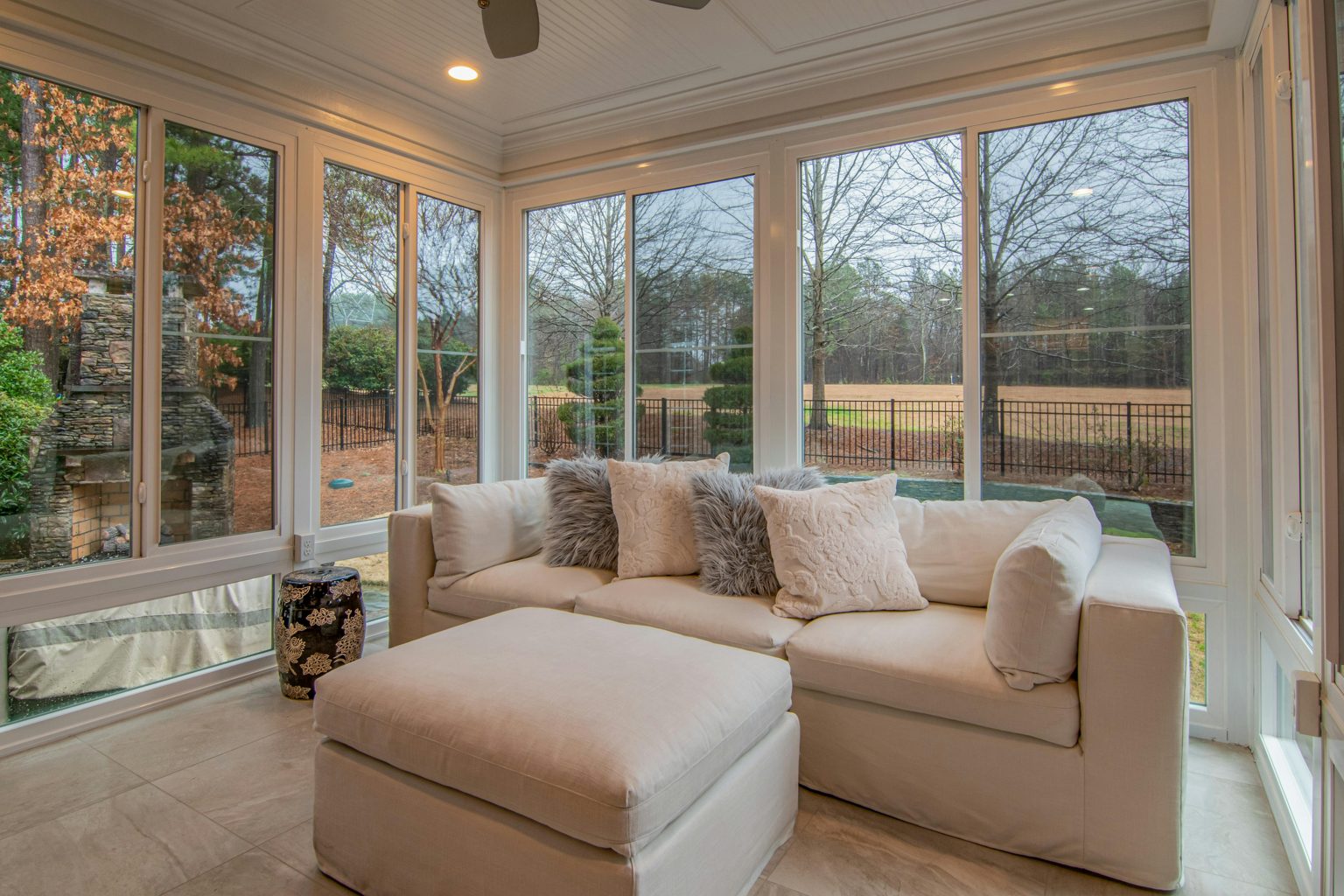Adding more space, natural light, and a seamless connection to the outdoors—these are just a few reasons homeowners consider sun room extensions. A sun room can dramatically enhance your living experience, offering a versatile space for relaxation, entertainment, or even working from home. But is it the right choice for your property? This article explores the key considerations, benefits, and potential drawbacks to help you make an informed decision.
What Is a Sun Room Extension?
A sun room extension is a home addition that features large windows or glass panels designed to let in maximum natural light. Sometimes referred to as a conservatory or garden room (though technically different), a sun room is often used as a secondary living area that connects the indoors with the outdoors. They can be built as a fully glazed structure or integrated with brickwork, depending on your preferences and local planning requirements.
Key Benefits of a Sun Room Extension
1. Natural Light and Views
Perhaps the most obvious advantage is the abundance of natural light. A sun room acts like a giant window to the world, offering panoramic views of your garden or surrounding landscape. This can improve your mood, reduce energy bills, and make your home feel more open and inviting.
2. Additional Living Space
Whether you need a playroom, a reading nook, a home office, or a casual dining area, a sun room offers flexible functionality. Unlike loft or basement conversions, sun rooms typically feel more accessible and are easier to use as a daily part of your home life.
3. Increased Property Value
Well-designed sun rooms can add significant value to a property. Prospective buyers often see sun rooms as a desirable feature that adds aesthetic and functional appeal. While the exact value increase depends on location and design quality, a thoughtfully planned sun room extension is often seen as a smart investment.
4. Connection to Nature
Spending time in a sun room brings the outdoors in. Whether it’s enjoying the sunrise with a coffee or watching a summer storm roll in, the sensory experience a sun room provides is hard to replicate in any other part of the house.
Important Considerations Before You Build
While sun rooms can be fantastic additions, they’re not always suitable for every property or homeowner. Here are a few things to evaluate:
1. Space and Layout
Does your property have enough room to accommodate an extension without sacrificing garden space or accessibility? A sun room requires a strategic location—typically at the rear or side of a property. Consider how it will affect your home’s overall flow and natural light distribution.
2. Planning Permission
In the UK, many sun room extensions fall under “permitted development” rights and may not require planning permission. However, there are exceptions—especially if you live in a listed building, conservation area, or plan to build beyond certain height or size limits. Always check with your local planning authority before proceeding.
3. Orientation
The direction your sun room faces will significantly impact its usability and comfort. South-facing rooms get the most sunlight but may require good ventilation and shading to avoid overheating. North-facing rooms receive more diffuse light, which might necessitate additional insulation or heating.
4. Thermal Efficiency
Traditional conservatories have a reputation for being too hot in summer and too cold in winter. Modern sun room extensions, however, often feature insulated roofs, double or triple glazing, and thermally efficient materials. Still, you’ll want to carefully consider the energy performance of your chosen design to ensure year-round comfort.
5. Cost and Budget
Costs can vary widely based on materials, size, and features. A basic sun room might start around £10,000, while a high-spec extension could exceed £30,000 or more. Be sure to budget for extras like flooring, lighting, heating, and furnishings. It’s also wise to include a contingency for unexpected costs.
Design and Style Options
Sun room extensions can be customised to suit both modern and traditional homes. Popular design elements include:
- Framed glass walls for an ultra-modern, open feel
- Brick or stone bases to blend with older properties
- Pitched or tiled roofs for a more substantial, room-like feel
- Bi-fold or sliding doors to open up the room to the garden
- Skylights or roof lanterns for additional light from above
Work with an experienced architect or builder who can help design a space that harmonises with your home’s existing style and structure.
Is a Sun Room Right for You?
Ask yourself the following questions to assess whether a sun room is a good fit:
- Do you have unused outdoor space that could be converted?
- Will a sun room meet a specific need (e.g., more family space, a reading room, or home office)?
- Can your current heating and cooling systems accommodate the extension?
- Are you prepared for the planning and building process?
- Will you be living in the property long enough to enjoy the benefits and potentially recoup the investment?
If you answered “yes” to most of the above, a sun room extension could be a highly rewarding home improvement.
Conclusion
A sun room extension offers a stylish, functional, and light-filled space that enhances your home and your lifestyle. While it’s not the right solution for every property or budget, it can be an excellent investment for those looking to add space and natural light. By carefully considering your property’s layout, local regulations, and long-term needs, you can determine whether a sun room is the perfect fit for your home extension.



